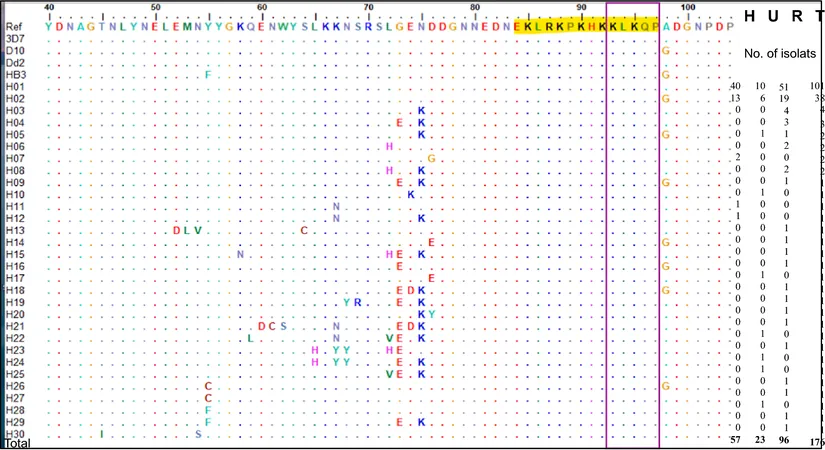
Revealing the Complex Genetic Landscape of Malaria in Congo: A Deep Dive into Plasmodium falciparum
2025-08-29
Author: Mei
Malaria remains one of the deadliest threats to public health, especially in sub-Saharan Africa. In 2024 alone, projections indicated a staggering 263 million cases globally, resulting in nearly 600,000 deaths, with Africa accounting for 94% of these cases. In the Republic of Congo, malaria tops the charts as the leading cause of medical consultations, hospitalizations, and mortality; a crisis exacerbated by factors such as drug resistance in both parasites and mosquitoes, alongside the absence of fully effective vaccines.
Amidst ongoing global efforts spearheaded by the World Health Organization (WHO) to combat this disease, malaria vaccines targeting Plasmodium falciparum—specifically the circumsporozoite protein (PfCSP)—are recognized as pivotal. Notable vaccine candidates like RTS,S/AS01 and R21/Matrix-M have shown promise in pilot studies, effectively reducing severe malaria cases by significant margins.
The Need for Local Strain Data in Congo
With WHO planning to deploy these vaccines in many African nations, including the Republic of Congo, assessing the local strains of PfCSP is crucial. This study aims to analyze the genetic diversity of PfCSP in children from Southern Brazzaville, laying the groundwork for effective vaccination strategies.
Innovative Methods for Genetic Analysis
Utilizing advanced molecular techniques, researchers extracted DNA from blood samples to identify various Plasmodium species and specifically target the PfCSP gene for analysis. They implemented meticulous protocols to ensure accuracy, using nested PCR and sequencing methods to capture the full genetic landscape.
Significant Findings on Genetic Polymorphism
Among the 198 samples from children, a striking diversity of PfCSP was noted. In the N-terminal region, key mutations were identified, including the prevalent A98G mutation, which raises pertinent questions about its impact on vaccine efficacy. Despite low polymorphism overall, specific motifs were conserved, underscoring their critical role in the disease's progression.
A Closer Look at Variations in Vaccine-Targeted Regions
The research revealed significant polymorphism in the central repeat region of PfCSP, with 50 unique haplotypes identified. This challenges existing vaccine strategies targeting well-documented motifs and indicates that genetic variability can drastically affect vaccine effectiveness.
The C-terminal Region: A Divergent Landscape
The C-terminal region also demonstrated extensive polymorphism, with notable mutations that could potentially alter immune responses, thus threatening the effectiveness of existing vaccines. Notably, widespread mutations like K317E and N321K were prevalent, signaling an urgent need for region-specific vaccine adaptations.
The Path Forward: Data-Driven Vaccine Strategies
As several African nations incorporate malaria vaccines into their childhood immunization programs, this research spotlights the critical need for tailoring these strategies based on local P. falciparum variations. The findings from the Republic of Congo may serve as an essential reference point, prompting a reevaluation of how vaccines are designed and deployed.
Conclusion: A Call for Continued Research
While this study sheds light on the genetic diversity of PfCSP in Congo, its limitations suggest further investigation is necessary. The landscape of malaria is forever changing, and continuous research will be instrumental in fortifying vaccination strategies against this persistent health threat.



 Brasil (PT)
Brasil (PT)
 Canada (EN)
Canada (EN)
 Chile (ES)
Chile (ES)
 Česko (CS)
Česko (CS)
 대한민국 (KO)
대한민국 (KO)
 España (ES)
España (ES)
 France (FR)
France (FR)
 Hong Kong (EN)
Hong Kong (EN)
 Italia (IT)
Italia (IT)
 日本 (JA)
日本 (JA)
 Magyarország (HU)
Magyarország (HU)
 Norge (NO)
Norge (NO)
 Polska (PL)
Polska (PL)
 Schweiz (DE)
Schweiz (DE)
 Singapore (EN)
Singapore (EN)
 Sverige (SV)
Sverige (SV)
 Suomi (FI)
Suomi (FI)
 Türkiye (TR)
Türkiye (TR)
 الإمارات العربية المتحدة (AR)
الإمارات العربية المتحدة (AR)